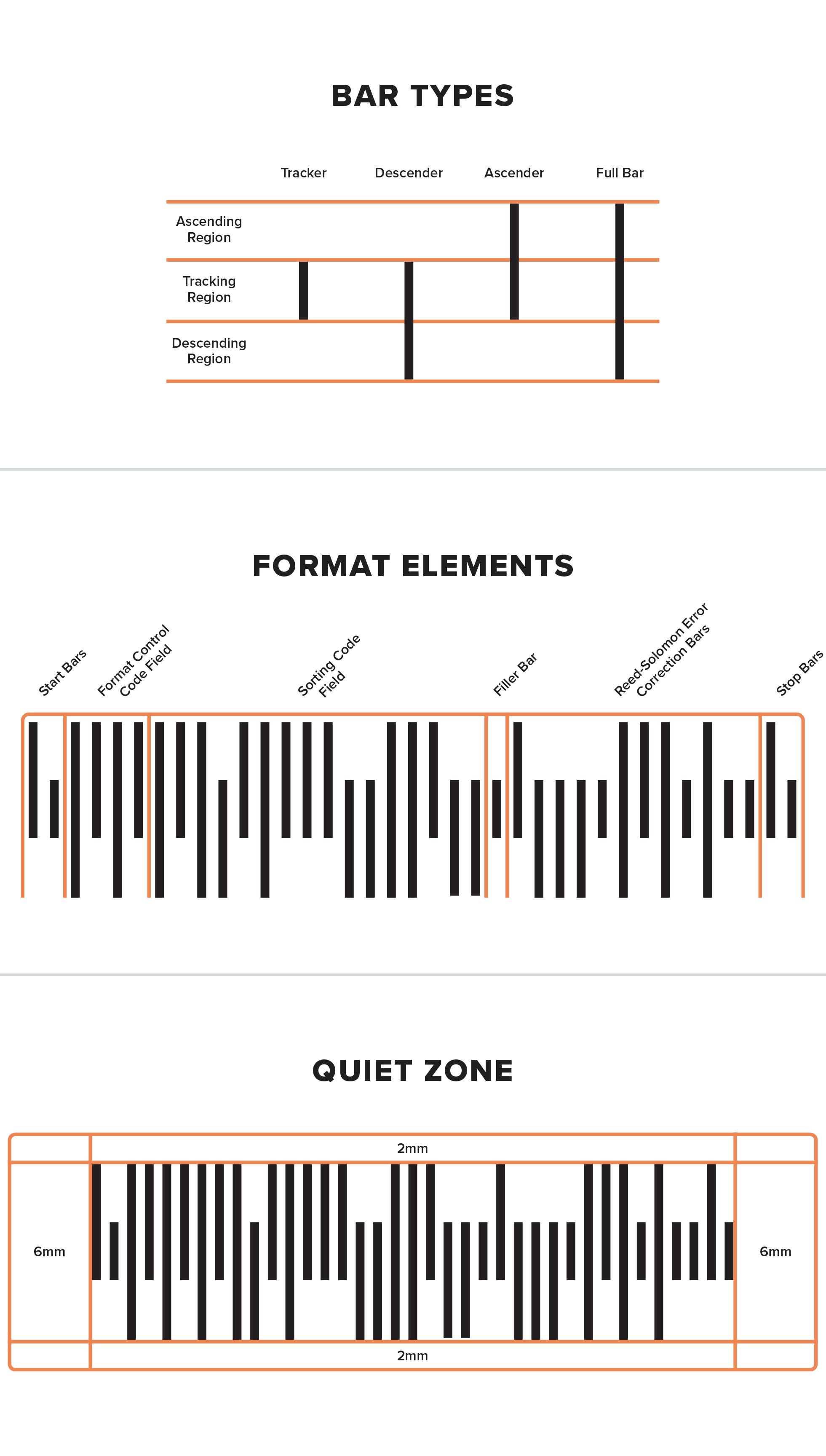Australian Post 4-State Code
Australian Post 4-State Code
The Australian Post 4-State Code is a mail delivery barcode based on the UK’s Royal Mail 4-State Customer Barcode. The format differs from UPC, EAN, and interleaved format by leveraging the vertical position and length of bars — their “state” — to encode information. This barcode type supports four different formats:
- Standard
- Customer Barcode 2
- Customer Barcode 3
- Reply Paid Barcode
The Australian Post 4-State Code was adopted by the country’s mail service in 1998 as part of an effort to upgrade the postal system and increase efficiency. Investments of more than $500 million allowed the postal service to both implement this new barcode system for all customer mail, develop and deploy the postal address file (PAF), which listed 8.8 million physical delivery points in Australia, and equip mail centers with barcode sorters to quickly and accurately scan 4-State Post Codes.

Format
As seen in the image to the right, the Australian Post 4-State Code contains four bar types, defined as follows:
- Tracker. Designation “T”, bar state value 3 — This smallest bar only occupies the middle of the barcode
- Descender, Tracker. Designation “D”, bar state value 2 — This bar begins in the middle of the code and descends to the bottom.
- Ascender, Tracker. Designation “A”, bar state value 1 — This bar begins in the middle of the code and ascends to the top.
- Tracker, Ascender, Descender. Designation “H”, bar stat value 0 — This bar spans the entire height of the barcode and includes all three previous states.
The Australian Post 4-State Code contains several format elements, including:
- Start Bars — The first two bars of this code are “start bars,” which identify the orientation of the symbol. Their values are always 1 and 3.
- Format Control Code Field — The next three bars identify the specific format of the barcode, such as Customer Barcode 2, Customer Barcode 3, or Reply Paid Barcode.
- Sorting Code Field — Bars 7 through 22 encode data that identifies the delivery address using an eight-digit Delivery Point Identifier (DPID).
- Customer Identification Field — Used only for Customer Barcode 2 and 3 formats, this element must be 16 or 31 bars long.
- Filler Bars — If the customer identification field isn’t naturally 16 or 31 bars long, filler bars are used to make up the difference. These bars are always tracker bars with a value of 3.
- Reed-Solomon Error Correction Bars — 12 bars long, this error correction component is located just before the stop bars.
- Stop Bars — The final 2 bars of the code always have values of 1 and 3.
It’s also worth noting that the Australian Post 4-State Code requires a “quiet zone” beside, above, and below each barcode. Spaces on either side must be at least 6 mm and those above and below must be at least 2 mm. This barcode supports the encoding of numeric digits 0-9, uppercase and lowercase letters A-Z, number signs (#), and spaces.
Depending on the barcode format type, the Australian Post 4-State Code has differing bar counts along with minimum and maximum lengths. For example, a Standard Customer Barcode is 37 bars long with a minimum length of 37.0 mm and a maximum length of 42.2 mm. Customer Barcode 3, meanwhile, comes in at 67 bars long with a minimum length of 67.5 mm and a maximum length of 76.8 mm. The Reply Paid barcode is 37 bars long but has no minimum or maximum lengths.

Common Use Cases
This code is used by Australia Post to record package data such as point of origin, destination, and delivery status across the country.